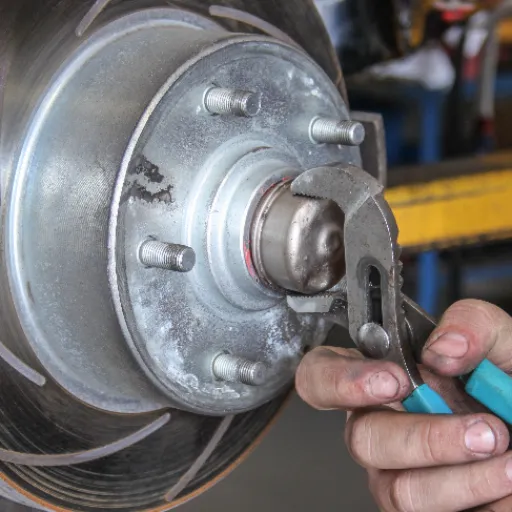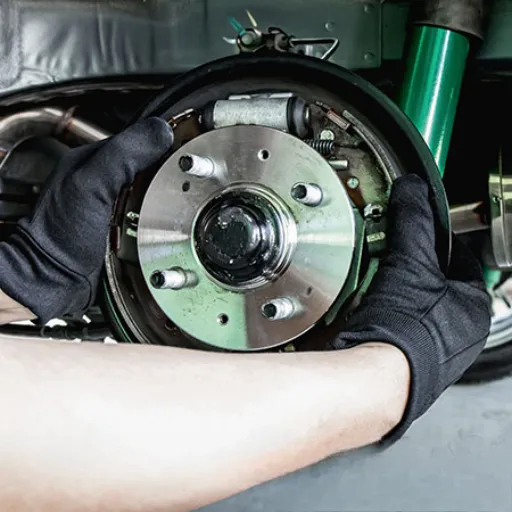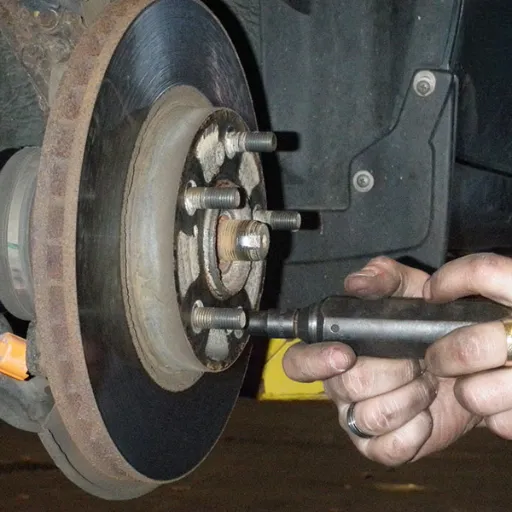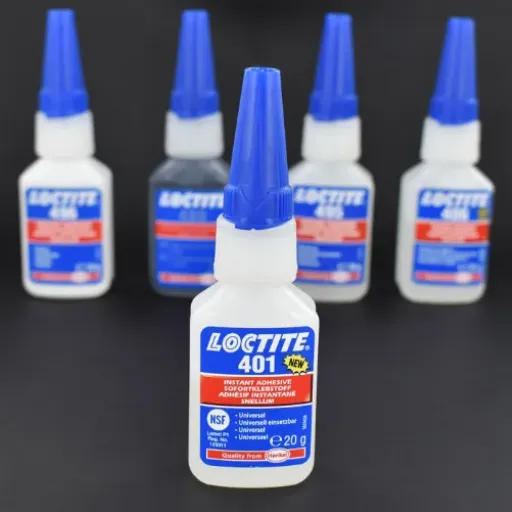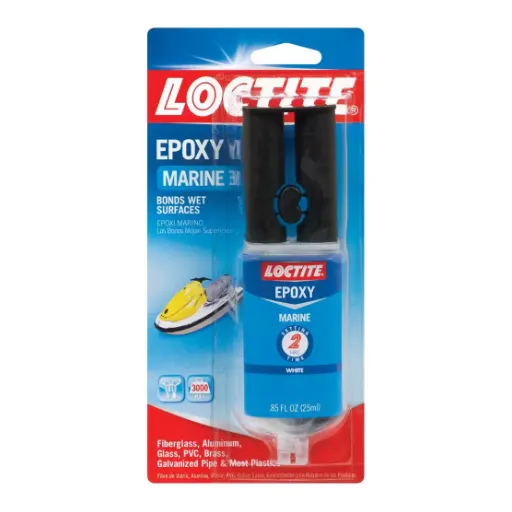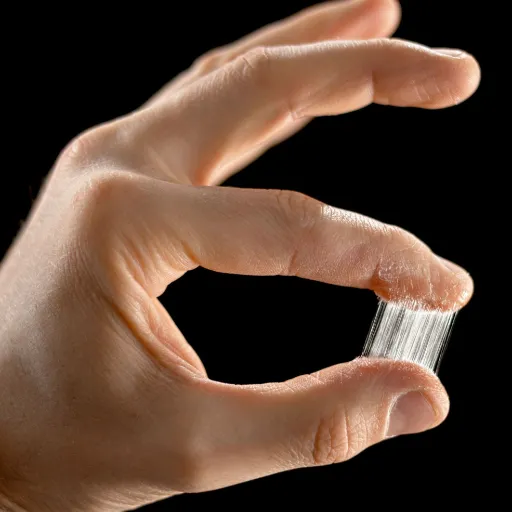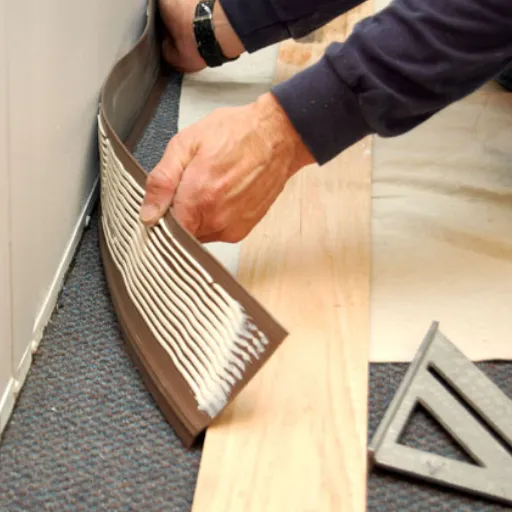When it comes to choosing adhesives, there is a staggering variety of glues available in the market, each one catering to a specific repair need. Selecting the wrong glue for a particular fix can render a task both time-consuming and difficult, whether it’s home repair project, an arts and crafts endeavor, or even intricate machinery repairs. gorilla glue and super glue have always been side by side in comparison, but is there really one better than the other? In this article, we conduct a thorough comparison between both considering their features, uses, and effectiveness so that by the end you will know exactly which glue sticks best to your requirements armed with helpful information and insights.
What are the Differences Between Gorilla Glue and Super Glue?
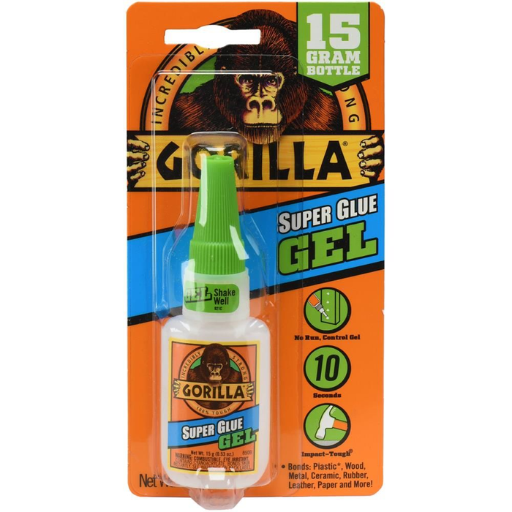
The primary and most noticeable differences between the two types include the chemical make up, bonding capabilities, and their applicable uses. Known for their strong adhesive holds, polyurethane based glues work best for intricate wood projects. The glue expands while curing and is useful in case of very porous materials like stone, wood, or ceramics. It is also waterproof making it suitable for indoor as well as outdoor projects
On the contrary, Super Glue is a cyanoacrylate adhesive that bonds very well to non-porous metals, plastics and glass. It is best for precision work because, unlike Gorilla glue, it does not expand during curing.
The use of either glue depends on the material to be repaired. It is best to start with Super Glue for small applications of non-porous materials. For large porous surfaces, or their outdoor use, Gorilla Glue works better.
Understanding the Composition of Gorilla Glue
Gorilla glue is also known for the expanding polyurethane glue that cures when exposed to moisture. It is made up of isocyanate and polyurethane resin which has a bond with water molecular units and strengthens the connection while generating foam. The curing process facilitates the secure adhesion as it expands during the curing process. This glue can fill in spaces while curing which helps it to merge with the wood, stone, ceramics, and other porous materials. These proprietary additives as well as the polyurethane adhesive and water resistant glue makes it highly durable. Moreover, it is resistant to other environmental factors like extreme temperatures. Because of these properties, it can be used both indoors and outdoors. The only drawback is that care must be taken so that harm does not come due to excess material resulting in untidy work.
What is Super Glue Made Of?
Super glue or cyanoacrylate glue is a one part glue (‘single component’) which means it does not need any additional materials in order to make it work. Super glue expands with moisture which is the chief cause of its quick bond in joining different parts. Super glue contains an acrylic resin widely known as ethyl cyanoacrylate. The air has moisture which triggers the compound to make a bond. The curing process transforms superglue through ‘polymerization’ which helps in making bond with water molecular units and turns the liquid form into solid form making it plastic-like in nature.
Aliphatic dienes are used to create super glue, which is a cyanoacrylate. Some of its components include additives that enhance flexibility or heat resistance. Moreover, thickeners that improve usability on porous surfaces are used, along with stabilizers that prevent curing during storage. Due to its unique features, super glue is very useful in construction and medicine where precision is essential.
How Do Their Curing Processes Differ?
Compared to other adhesives, the curing processes of cyanoacrylate adhesives blends different techniques because they need moisture to trigger polymerization. Exposure to moisture activates the adhesives, which is why super glue can cure within a few seconds to minutes, although the humidity and temperature of the environment will affect how fast or slow it cures. On the other hand, some types of adhesives like epoxies tend to use a manual two part system with a resin and hardener that needs to be mixed in order to achieve optimal strength which takes a lot of time to cure. Polyurethane adhesives combine chemical reaction and moisture absorption which takes several hours to fully set. These processes influence the technique used for bonding, taking into consideration the operational timelines, substrate compatibility, and environmental resistance.
When Should You Choose Gorilla Glue?

Gorilla Glue is one of the most effective industrial adhesives in the market. It works on materials such as wood, metal, ceramics glass and some plastics foams or polyethers. With superior strength, it also withstands water and temperature variations, making it effective for both indoor and outdoor applications. Though it has diverse industrial applications, its uses are pre-defined by the specific requirements such as accuracy of placement and lasting adhesion. Following instructions concerning application and curing time is essential for optimal outcome.
Best Applications for Gorilla Glue
- Woodworking and Carpentry Projects
Due to the linear polyurethane structure of adhesive Gorilla Glue, it easily penetrates the wood fibers, creating anggoding, void-free, and durable bond, which makes it particularly effective in repairs or assembly of furniture as well. Further, it is well documented that shearing forces applied on adhesive joints employed with polyurethane adhesives, like Gorilla glue, are quite high, particularly if the joints need to carry a load.
- Metal Repairs and Assemblies
Gorilla glue has application on various metals and alloys. Aluminum, steel, and copper are easily joined by Gorilla glue due to its effective polybonding. Similarly, tools, fixtures, and automotive parts made of these metals can also be repaired using gorilla glue as it has strong bonding properties. CNC tests of adhesive joints have confirmed substantial gap filling capabilities, tensile lap shear strength when placed internally, verifying accuracy of the required slang “metal-to-metal bonding.”
- Ceramic and Porcelain Fixes
Gorilla glue provides a waterproof and strong bond for broken ceramic and porcelain items like tiles, mugs or decorative pieces. It is useful for both structural and aesthetic repairs due to nonporous materials being easy to bond with.
- Glass Applications
Gorilla Glue offers exact and clear bonds on glass repair. It works perfectly for reassembling broken glass items like frames, vases or glass panels. Indoor and outdoor glass projects are also safe with the bond since water exposure will not weaken the bond due to moisture resistance.
These applications demonstrate the dependability and versatility of Gorilla Glue as a go-to adhesive for casual and professional users from various fields. For any repair or construction project, do not forget surface preparation and curing time for maximum efficiency of the adhesive.
How to Properly Use Gorilla Glue for Wood Projects
Gorilla Glue requires wooden surfaces to be prepped correctly to ensure that the glue works as intended. Check that the surfaces to be joined are clean, dry, and void of any dust as well as grease/ oil. Any contaminants will weaken the bond formed. For best results, lightly moisten one of the wooden surfaces using a cloth or spray bottle. This moisture helps the polyurethane adhesive to activate and allows easier curing.
Apply a thin layer of Gorilla Glue to the opposite surface, but ensure that it is minimal to avoid excess during the curing phase. The surfaces must be clamped or pressed together to enable even distribution of pressure along the bond area for at least 1 to 2 hours. For optimum functioning, the adhesive must be stress-free for 24 hours after applying the glue.
Just like with temperature, humidity is also a significant factor that impacts curing processes such as with gorilla glue which works most effectively within the temperature range of 40°F to 200°F. Super glue these days is popular due to its fast working nature and ease of use. Super glue is able to work with a wide variety of materials and also works well under stress providing great strength to durability ratio.
What Makes Super Glue a Popular Choice?
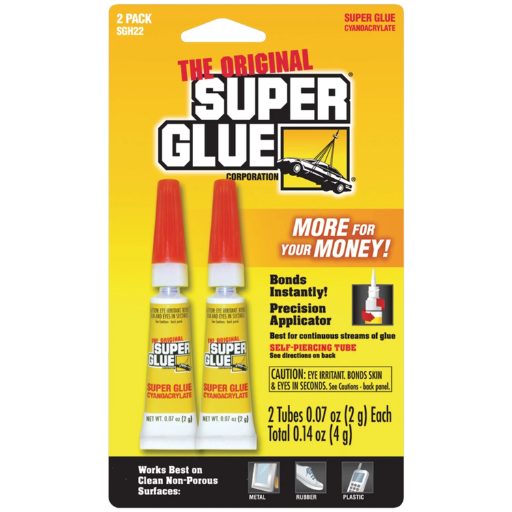
Super Glue is preferred by individuals because of its quick action and strong adhesive nature. It can bond plastics, metals, woods and even ceramics giving it a variety of uses. Super Glue can cure in seconds which allows repairs to be done quickly without the need of clamps. The durability and strength of the bond ensures it will withstand great force so long as it is applied correctly. The trust and reliability of this glue is amplified by the simple way of applying it which is using a small dollop.
Advantages of Using Super Glue for Quick Repairs
- Rapid Bonding Time
The full name of super glue is cyanoacrylate adhesive and it becomes super glue within 10 to 30 seconds of being exposed to air or moisture. This rapid bonding gives it super glue’s best feature – speed.
- Versatility Across Materials
Super glue or cyanoacrylate adhesive works well on almost metals , plastics, fabrics, wood, rubbers, ceramics and other materials. This makes super glue handy for multi-purpose repairs in households, industries and even in medical fields.
- High Bond Strength
The tensile strength super glue bonds form with different materials differ from 15 MPa to 30 MPa. This aid in super glue’s reliability ensures that it supersedes stress: vibration and impact forces in varying conditions.
- Minimal Usage Requirement
Due to super glue’s high surface adhesion and low viscosity, only a small amount is often needed to form a strong adhesion. This is helpful for frequent users as costs will be lower.
Super glue can be relied on for quick, cost-effective repairs needed in homes, hospitals, or clinics, industrial applications, or canvas.
How to Fix with Super Glue: Tips and Tricks
- Prepare the Surfaces
For optimal adhesion, both surfaces must be clean and dry with no oil or dirt. Use gentle scrubs or alcohol wipes to remove any residue that can possibly weaken the bond.
- Apply in Thin Layers
Spread super glue thinly on one side only. Excess super glue hinders proper curing with weaker bonds trapped due to delayed air pocket hardening.
- Align Precisely
Alignment surface positioning is critical. Super glue bonds on the first attempt and shift repositions after initial contact are not recommended and will break bond integrity.
- Clap or Hold Steady
Consistent pressure applied by hand or using clamps within the 30 seconds to 1 minute mark allows for easy adhesive set during this window. Vertical surfaces or porous needs extra time for thorough curing propagation for improved adhesion.
- Store and Maintain
To preserve the effectiveness and shelf life of the adhesive, store it in a dry and cool place. Clean and seal the nozzle post usage to maintain the glue’s effective mechanisms from clogging.
Through the meticulous methods outlined above, super glue can be used to form long-lasting bonds that are able to endure considerable strain and environmental factors. This guarantees consistent functionality for routine fixes as well as for more advanced use cases.
Super Glue vs. Gorilla Glue
|
Key Point |
Super Glue |
Gorilla Glue |
|---|---|---|
|
Drying Time |
About 10-30 seconds |
1-2 hours |
|
Full Cure Time |
24 hours |
24 hours |
|
Main Component |
Cyanoacrylate |
Polyurethane |
|
Suitable Material Types |
Non-porous materials, small repairs |
Porous and non-porous materials |
|
Water Resistance |
Moderate |
High |
|
Bond Strength |
High |
Very high |
|
Expansion During Curing |
None |
Expands as it cures |
|
Best for Precision Work |
Yes |
No |
|
Temperature Resistance |
Moderate |
High |
|
Shelf Life (Sealed) |
1-2 years |
1-2 years |
How to Choose the Right Glue for Your Projects?

Tips for choosing adhesive glue for your project:
- Material Type: Let your adhesive selection be informed by your smooth and rough surfaces. Different glues work best on different surfaces.
- Strength Requirements: If your project entails tough conditions, consider a stronger bond. For harsh conditions, choose an adhesive that will allow a significant bond.
- Environmental Conditions: Evaluate the conditions your project will be put through. Look out for adhesives that are water permanently bound where moist of water is involved.
- Precision Needs: For small details use an adhesive strong enough to hold without expanding.
- Shelf Life: Only some glues will outlast other.
Adhering the guidelines aids in effective and lasting performance. Always follow the manufacturer’s guides for the best results.
What Type of Glue Works Best for Your Materials?
Strong and durable joints require the selection of the right glue for the correct material. For wood, volatile organic compound (VOC) glues have a revolutionary ease of use, non-toxic nature, and superb bonding with porous surfaces. For metals, the preferred adhesives are epoxies because they have better strength, durability, and can withstand higher temperatures, chemicals, and corrosive environments. Matters concerning plastics tend to need stricter scrutiny; for inflexible types of plastics, super glue works best but for flexible types, polyurethanes work best. When it comes to glass bonding, the joints must be clear which requires the use of transparent silicone or UV-curing glues that bond strongly while remaining almost invisible. In respect to ceramics, one of the reliable options is two-part epoxies because of their remarkable strength. All of these adhesives have different ways of interacting with materials which gives them the particular preferred attributes listed above.
Tips for Selecting Between Glue and Gorilla Glue
- Material Compatibility
- Glue: Other traditional gluing methods are almost always limited to specific materials. For example, PVAs used in wood work are designed specifically for porous materials while plastic glues focus on rigid substrates such as PVC or ABS. Looking at the labels and checking for compatibility is important.
- Gorilla Glue: Its reputation for versatility does not come without merit since it can bond as wide a list as wood, metal, stones, plastics and even ceramics. Its polyurethane formula expands, which builds strong bonds between very different surfaces.
- Strength and Durability
- Glue: Common glue types like hot glue or PVA offer reasonable support in bonding for lightweight materials, but may fail for more demanding stressed environments or hot and moist conditions.
- Gorilla Glue: It holds a rated industrial strength, makes it ideal for construction grade tasks where projects with long lasting structural integrity are required while also being highly durable, waterproof and resistant to other moisture.
- Cure Time
- Glue: More simple adhesives, like super or school glue, tend to dry within minutes. On the other hand, epoxies may take hours to fully cure.
- Gorilla Glue: The clamping time needed is 1 to 2 hours and fully cures within 24 hours.
- Water Resistance
- Glue: Most common adhesives are water-soluble, limiting their usage in outdoor or humid environments. For instance, simple PVA glue is not waterproof.
- Gorilla Glue: Its waterproof properties (meets ANSI/HPVA Type I standards) makes it very useful for outdoor applications or places exposed to water and moist air.
As with any product, these factors need to be considered alongside your project requirements to achieve the desired results.
Can You Combine Gorilla Glue and Super Glue?

Indeed, the combination of Gorilla Glue and super glue is possible in theory, but certainly not advisable. Each glue has different properties, with super glue forming a bond on non-porous surfaces, while Gorilla Glue expands as it cures and works best with porous materials. It is very likely that using both would counteract the desired results and weaken the adhesive function. Even in this scenario, it would be safer to look for the most effective glue instead of combining them.
Is It Safe to Use Both Together?
There’s no clear danger in using super glue and gorilla glue together; however, the possibility of chemical reactions due to differing reacting mechanisms makes it highly inadvisable. Water is required for Gorilla Glue to fully cure and is only useful when paired with porous materials like wood. Cyanoacrylate super glue’s bond formation is triggered by moisture; however, it works best with non-porous materials like plastic and metal. The combination can result in problematic chemical reactions that may jeopardize your bond, inconsistent curing, or neutralize the changes to the rheological properties of both adhesives. It is far more effective and safer to decide on the appropriate glue to use based on the material and method of application.
Effects of Mixing Different Adhesives
Mixing different types of adhesives could result in unexpected reactions that compromise material integrity. Take for example, epoxies having restraining ratios of resin and hardener, they can be mixed with cyanoacrylates or silicone based glues. The result of this mix would be incomplete curing, low tensile strength, or bonds that are very weak and brittle.
Furthermore, the overall thermal and chemical behavior of hybrid adhesives is often indeterminate. Certain combinations, for instance, may exhibit safety hazards during use due to uncontrolled application of heat, exothermic chemical reactions, or the volatile compounds release. Additionally, certain non-compatible adhesives may interfere with the adhesive bonding mechanism, particularly when applied to composites with certain controlled porous microstructures or surface modifications. These examples illustrate the importance of obeying the manufacturer’s instructions and recommended procedures to guarantee reliable performance and durability of the adhesive bond.
Reference Sources
-
TradeNRG Blog: Gorilla Glue is generally stronger and more durable, making it suitable for long-term fixes and structural repairs. Super Glue, being cyanoacrylate-based, is better for quick fixes and precision work.
-
Yahoo Lifestyle: Gorilla Glue is ideal for heavy-duty materials like wood, metal, and ceramics due to its expanding formula. Super Glue is better for quick, precise repairs on materials like plastic and glass.
-
BuildEazy: Gorilla Glue offers a stronger bond and is non-toxic, but it can be tricky to reposition once hardened. Super Glue is faster to apply and cure, making it suitable for temporary fixes, but it may not be as strong or durable for heavy-duty tasks.
Frequently Asked Questions (FAQs)
Q: What are the pros and cons of using Gorilla Glue compared to super glue?
A: Gorilla Glue has the advantage of being waterproof and can fill gaps, making it great for outdoor use or joining wood. However, it requires moisture to activate and can expand, which may be a con in certain applications. Super glue, or cyanoacrylate, dries quickly and is excellent for small repairs, but lacks the gap-filling properties and is not as effective on porous materials.
Q: Can I use Gorilla Glue on a picture frame?
A: Yes, Gorilla Glue can be used on a picture frame, especially if you need to fill gaps. However, if you’re working with delicate materials or need a fast bond, super glue may be a better choice for its quick drying time.
Q: Is Gorilla Glue stronger than super glue?
A: Gorilla Glue is often stronger when used on porous materials like wood, as it expands and forms a strong bond. However, for non-porous materials or quick fixes, super glue can provide a stronger initial bond.
Q: What is the best choice for joining wood: Gorilla Glue or super glue?
A: For joining wood, Gorilla Glue is typically the best choice due to its ability to fill gaps and provide a waterproof bond. Super glue can work for small wood repairs but may not hold up as well in the long term.
Q: Can super glue and Gorilla Glue be used interchangeably?
A: While both are adhesives, they serve different purposes and should not be used interchangeably. Super glue is ideal for quick fixes and small repairs, while Gorilla Glue is better for heavier applications and outdoor projects.
Q: How do I know which adhesive to choose for certain plastics?
A: For certain plastics, it is essential to check the adhesive compatibility. Super glue typically works well on most plastics, while Gorilla Glue may not adhere effectively. Always test on a small area first or consult the manufacturer’s instructions.
Q: Can I use baking soda with super glue?
A: Yes, baking soda can be used with super glue to create a thicker adhesive that can fill gaps. This combination can enhance the bonding strength and quicken the curing process.
Q: Is there a specific activator for Gorilla Glue or super glue?
A: Gorilla Glue does not require an activator, as it activates with moisture. However, for super glue, there are activators available that can speed up the curing process and increase bond strength.
Q: Are there any popular adhesives that outperform Gorilla Glue and super glue?
A: There are other popular adhesives like Loctite and epoxy that may outperform Gorilla Glue or super glue in specific applications. For instance, epoxy can bond a wider range of materials and provide a more durable bond in some cases.







